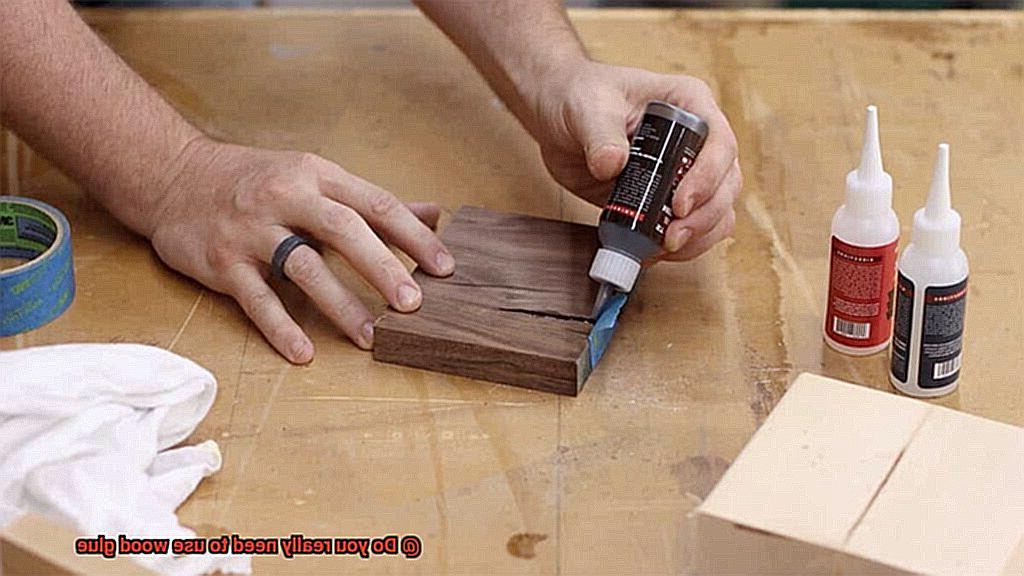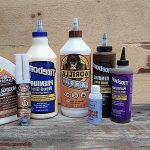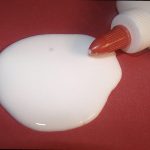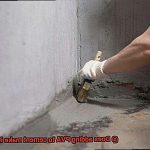Are you a woodworking enthusiast? Do you often wonder if using wood glue is really necessary for your projects? As a beginner, this question can be tricky to answer. But fear not, we’ve got you covered.
Wood glue can make or break your project. It’s a vital tool that provides strength and durability to your finished product. However, there are situations where it’s not needed at all. So, do you really need to use wood glue?
The answer is simple – it depends. There are several factors to consider when deciding whether or not to use glue. Factors such as the type of wood, the type of joint, and the overall strength required must be taken into account.
In this blog post, we’ll explore everything you need to know about using wood glue in your woodworking projects. We’ll discuss the different types of glue available, their pros and cons, and situations where using glue is absolutely necessary.
Whether you’re an experienced woodworker or just starting out, understanding when and how to use glue can make all the difference in the success of your projects. So let’s dive in together and find out if using wood glue is essential for your next masterpiece.
Benefits of Using Wood Glue
Contents
- 1 Benefits of Using Wood Glue
- 2 What Types of Wood Glue Are Available?
- 3 When Is it Necessary to Use Wood Glue?
- 4 Advantages of Using Wood Glue over Other Fastening Methods
- 5 How to Choose the Right Type of Wood Glue for Your Project
- 6 Tips for Applying and Working with Wood Glue
- 7 Common Mistakes to Avoid when Working with Wood Glue
- 8 Conclusion
Woodworking is a craft that demands precision, patience, and the right tools to create exceptional results. Wood glue is one such tool that is specifically designed to bond wood together and create a strong and lasting joint that can withstand the test of time.
In this post, we will explore the numerous benefits of using wood glue in woodworking projects.
Creates a Strong Bond:

One of the primary advantages of using wood glue is its ability to create a bond that is stronger than the wood itself. Unlike other adhesives, wood glue penetrates deep into the wood fibers, creating a powerful and long-lasting bond that will hold strong even under stress or pressure.
Reinforces Joints:
Wood glue helps to reinforce joints and prevent them from coming apart. This is particularly crucial for furniture or other items that will be subjected to constant stress or weight. By creating a robust and stable joint, wood glue ensures that your project will remain intact for years to come.
Easy to Use:
Another benefit of using wood glue is its ease of use. It can be applied with a brush or roller, and it dries quickly, allowing you to move on to the next step of your project without delay. Moreover, it is relatively inexpensive compared to other types of adhesives, making it an accessible choice for any woodworking enthusiast.
Enhances Appearance:
Using wood glue can also enhance the appearance of your woodworking projects. Unlike other adhesives that leave behind visible residue or discoloration, wood glue dries clear and does not affect the natural look of the wood. This makes it ideal for use in projects where aesthetics are important.
Versatile:
Wood glue is a versatile adhesive that can be used on different types of wood, including hardwoods and softwoods. It is also effective in bonding wood to other materials like metal or plastic.
What Types of Wood Glue Are Available?
Wood glue is an essential tool for any woodworking project. There are many different types of wood glue, each with its own unique properties and advantages. In this article, we will explore the five most common types of wood glue and their uses.
PVA Glue:
Polyvinyl acetate (PVA) glue is a popular choice for woodworking projects. It is easy to apply and dries clear, making it ideal for projects where appearance is important. PVA glue also has a strong bond and is water-resistant once cured. It’s perfect for most woodworking projects and is a great choice for beginners.
Epoxy Glue:
Epoxy glue is a two-part adhesive that creates an incredibly strong bond. It can be used on a variety of surfaces, including wood, metal, and plastic. Epoxy glue is waterproof and heat-resistant, making it ideal for outdoor projects or items that will be exposed to high temperatures. Epoxy glue also has gap-filling capabilities, making it ideal for projects that require a strong bond between two surfaces.
Polyurethane Glue:
Polyurethane glue is known for its ability to bond to a wide range of surfaces, including wood, metal, and plastic. It creates a strong bond and is also waterproof once cured. However, polyurethane glue can be difficult to work with due to its expansive properties. Polyurethane glue is an excellent choice for projects that require a strong bond and gap-filling capabilities.
Hide Glue:
Hide glue has been used in woodworking for centuries and is made from animal hides. It provides a strong bond and can be easily reversed if necessary. Hide glue sets quickly and can be sanded or painted over once dry. It’s also non-toxic and environmentally friendly, making it an excellent choice for those who want to use sustainable materials.
Cyanoacrylate Glue:
Cyanoacrylate (or “super glue”) is a fast-drying adhesive that creates a strong bond in seconds. It can be used on a variety of surfaces, including wood, metal, and plastic. However, cyanoacrylate glue can be brittle and may not hold up well under stress. It’s ideal for small woodworking projects that require a quick fix.
When Is it Necessary to Use Wood Glue?
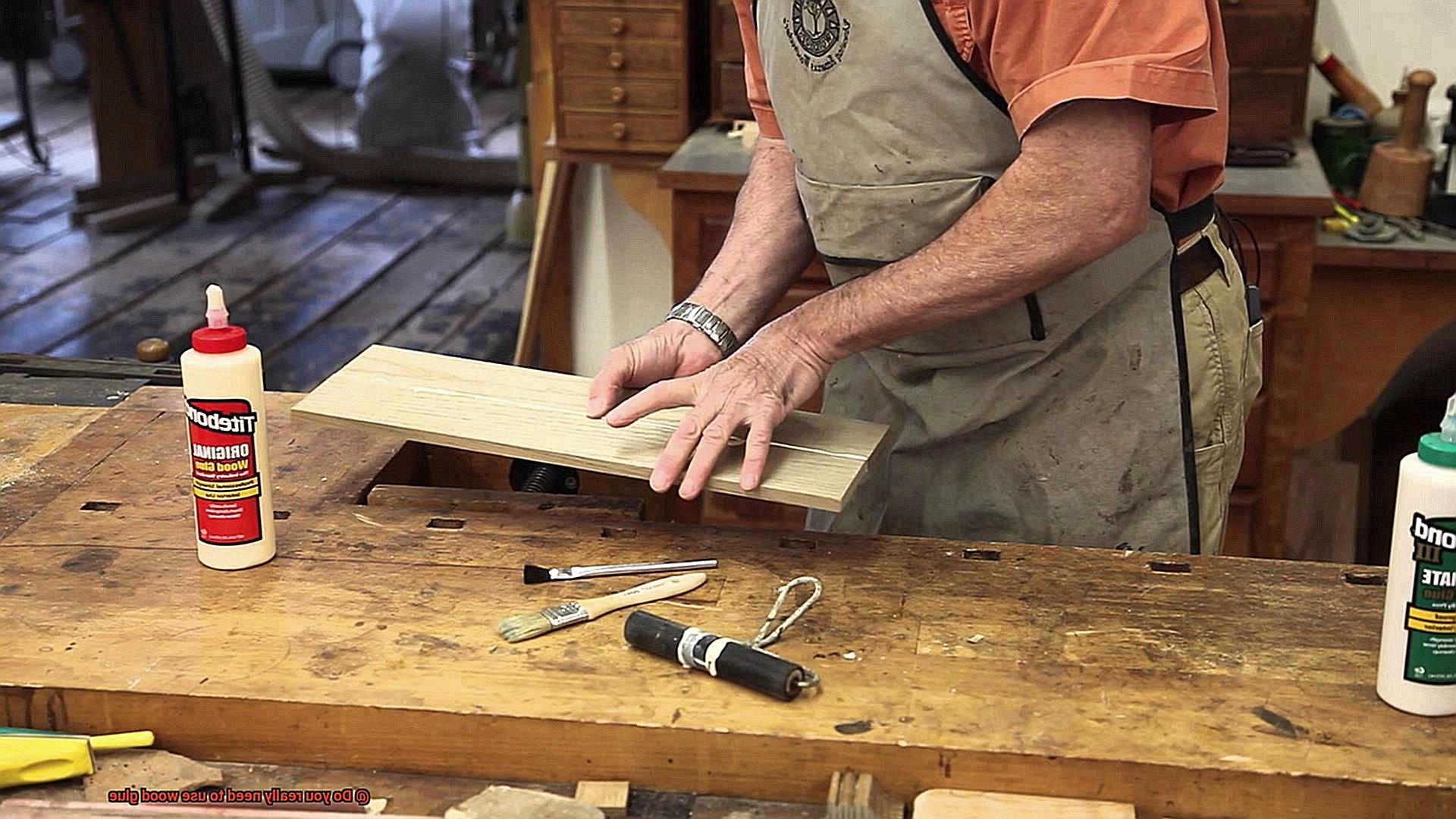
Not every project requires the use of wood glue. So, when is it necessary to use wood glue? Let’s dive in.
When joining two pieces of wood together permanently, using wood glue is a must. Wooden tables and chairs require a strong and durable foundation that can withstand the weight and pressure placed on them. By using wood glue, you can ensure that your project will stay intact for years to come.
Hardwoods such as oak or maple are dense and hard, making it difficult for screws or nails to hold them together. In this case, using wood glue is necessary as it penetrates the wood fibers and creates a strong bond that can handle the weight and pressure placed on it.
Plywood or particleboard have a tendency to split when screws or nails are used due to their structure. To avoid this problem, using wood glue ensures that the joints remain intact and strong. This will give your project the stability it needs for everyday use.
Advantages of Using Wood Glue over Other Fastening Methods
While there are various options available, wood glue stands out as one of the best choices. In fact, using wood glue over other fastening methods offers several advantages that make it a popular and reliable choice for many woodworking projects.
One significant advantage of using wood glue is its strength. When applied correctly, wood glue creates a bond that is even stronger than the wood itself, making it an ideal choice for projects that require durability. If you’re working with hardwoods such as oak or maple, which are challenging to hold together with screws or nails, wood glue is your go-to option.
Another advantage of using wood glue is its ability to fill gaps. Unlike other fastening methods such as nails or screws, wood glue can penetrate small gaps and cracks in the wood, creating a tight seal and preventing any movement or shifting of the pieces. This not only improves the strength of the joint but also creates a cleaner and more aesthetically pleasing finish.
Moreover, using wood glue eliminates the need for visible fasteners such as nails or screws, creating a seamless and polished look. This is particularly crucial for furniture or cabinetry where aesthetics are essential. With wood glue, you can create a seamless and professional-looking piece without any visible fasteners.
Lastly, another benefit of using wood glue is its versatility. It can be used for various woodworking projects, from small crafts to large-scale construction projects. Plus, you can use it in combination with other fastening methods for added strength and durability.

How to Choose the Right Type of Wood Glue for Your Project
Woodworking is a craft that requires precision and attention to detail. One of the most important aspects of woodworking is the glue you use. Choosing the right type of glue for your project can make all the difference in its success and longevity. Here are five key factors to consider when selecting the perfect wood glue for your next project.
Type of Project
The type of project you’re working on will determine the type of glue you need. For indoor projects, PVA glue is a great option, as it’s easy to use and dries clear. However, for outdoor projects or items exposed to moisture, polyurethane or epoxy glue is a better choice, as they are waterproof and more durable.
Drying Time
Different types of wood glue have different drying times, so it’s important to consider how much time you have to work with the glue before it sets. Fast-drying glues like cyanoacrylate are great for quick repairs, while slower-drying glues like polyurethane give you more time to adjust your pieces before they become permanently bonded.
Color
While most wood glues dry clear, some may leave behind a noticeable residue or color. If you want your bond to be completely invisible, look for a clear or transparent wood glue.
Strength Requirements
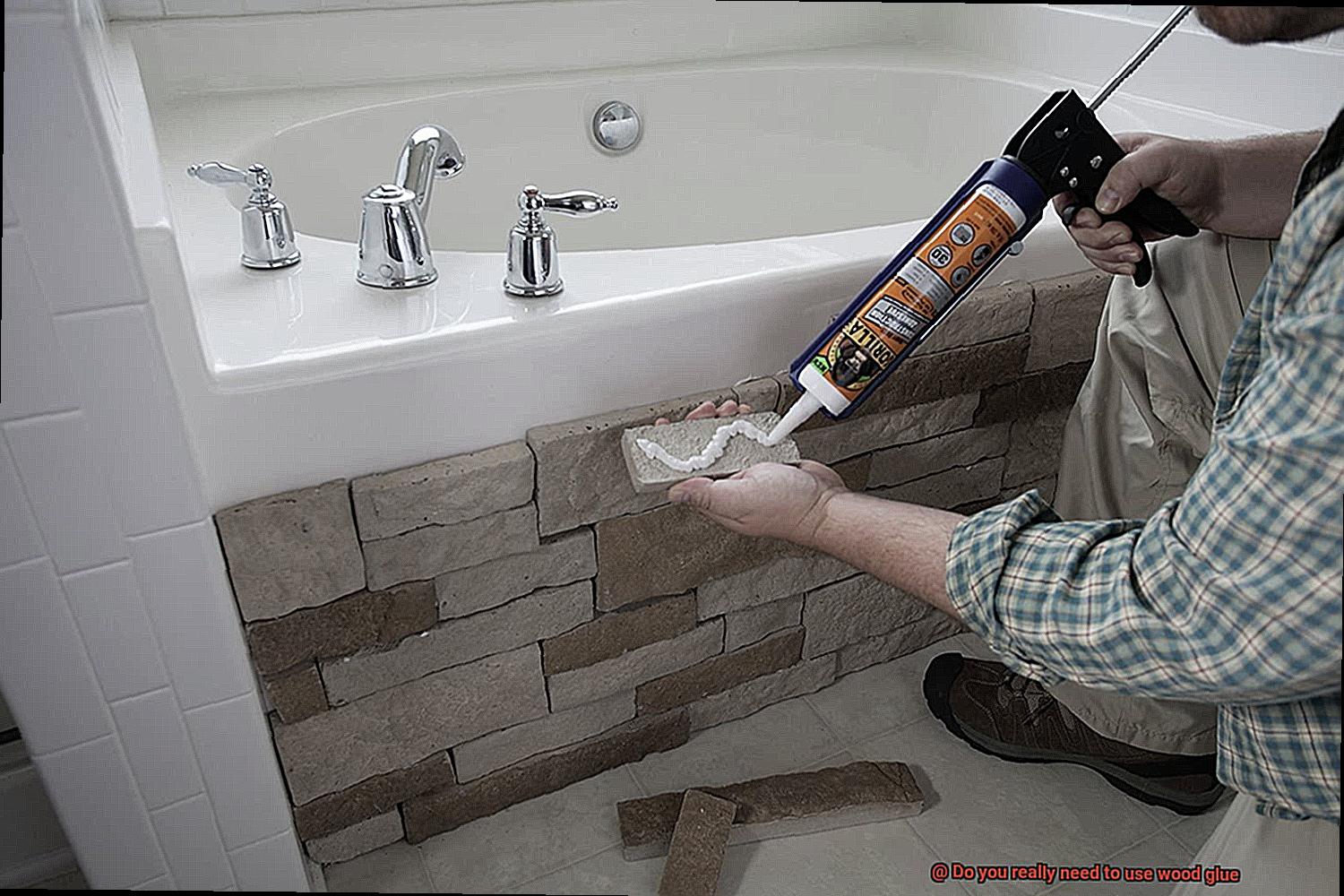
The strength requirements of your project will also influence your glue selection. For high-stress areas like chair joints or table legs, epoxy glue is an excellent choice because it’s extremely strong and durable. For less demanding projects, a PVA glue will suffice.
Application Technique
Finally, consider your own skill level and application technique when selecting a wood glue. Some glues require careful mixing before application, while others can be applied directly from the bottle. Make sure you choose a glue that you feel comfortable working with and that suits your level of experience.
Tips for Applying and Working with Wood Glue
Wood glue is a fundamental component of any woodworking project. However, applying and working with it can be challenging without the proper knowledge and skill. Here are five sub-sections with tips to help you apply and work with wood glue correctly in your woodworking projects.
Choose the Right Type of Wood Glue
Choosing the right type of wood glue is crucial for a successful outcome. There are various types of wood glue available, including white, yellow, and epoxy. White glue is ideal for indoor projects because it has a longer drying time, while yellow glue is best for outdoor projects because it dries faster. Epoxy is a strong adhesive that can be used for both indoor and outdoor projects.
Prepare the Surfaces Properly
Before applying any glue, ensure that the surfaces are clean, dry, and free from dust or debris. Sanding the surfaces if necessary will help you achieve a smooth and even finish.
Apply Glue Evenly and Thinly
When applying wood glue, make sure to apply it evenly and thinly to avoid warping or splitting of the wood. Using a brush or roller to apply the glue evenly over the surface area is recommended. Applying too much glue could cause drips or create a mess while using too little may not provide enough adhesion.
Clamp Tightly
To ensure that the glue fully adheres to the wood and creates a strong bond, clamp the pieces of wood together tightly after applying the glue. Use enough clamps to hold the pieces in place securely, but not too many as they can cause the wood to warp or bend.
Wipe Away Excess Glue
If excess glue oozes out from the joint after clamping, wipe it away with a damp cloth before it dries. Once the glue has fully dried, it can be sanded or shaped as needed to achieve a smooth finish.
Common Mistakes to Avoid when Working with Wood Glue
Wood glue is an essential element in any woodworking project, but using it incorrectly can result in weak or failed joints. Fortunately, there are some common mistakes that can be easily avoided to ensure a successful outcome. In this post, we will explore some crucial tips on how to avoid these mistakes and achieve strong and long-lasting joints in your projects.
One of the most frequent mistakes people make when using wood glue is not applying enough glue to the joint. It’s crucial to apply the correct amount of glue so that the joint is fully covered, without excess glue oozing out when the pieces are clamped together. If you don’t apply enough glue, your joint won’t be as strong as it could be and may fail over time.
Another mistake is not clamping the joint tightly enough. When clamping, you should apply enough pressure to ensure that the joint is fully closed, leaving no gaps in the joint and squeezing out excess glue. If the joint isn’t clamped tightly enough, it may weaken over time.
Using the wrong type of glue can also lead to weak joints. Ensure you select the right type of glue for your project; some glues are better suited for outdoor use while others are better for indoor projects. Choosing the wrong type of glue can result in a weak joint that may fail over time.
Lastly, not allowing enough time for the glue to dry can also result in weak joints. Always follow the manufacturer’s instructions on how long to let the glue dry before removing clamps or using the project. Rushing this step can result in a weak joint that may fail over time.
gPsBLealwwY” >
Also Read: What is the best glue to stick fabric to wood?
Conclusion
To sum up, the use of wood glue can make or break the quality of your woodworking projects. As a woodworking enthusiast, it’s crucial to know when and how to use wood glue correctly for optimal results. With various types of wood glue available, each with its unique properties and advantages, selecting the right one depends on several factors such as project type, strength requirements, drying time, color, and application technique.
The benefits of using wood glue are numerous. It creates a robust bond that reinforces joints and enhances appearance while being easy to use and versatile. Wood glue stands out from other fastening methods due to its ability to fill gaps seamlessly without visible fasteners like nails or screws.
However, working with wood glue requires proper knowledge and skill. Common mistakes like not applying enough glue or clamping tightly enough can result in weak joints that may fail over time. By following tips such as preparing surfaces properly before application and wiping away excess glue after clamping can help you achieve strong and long-lasting joints in your projects.
In conclusion, understanding when and how to use wood glue is critical for any woodworking project’s success. Choosing the right type of glue for your project and avoiding common mistakes during application will ensure optimal results for years to come.

